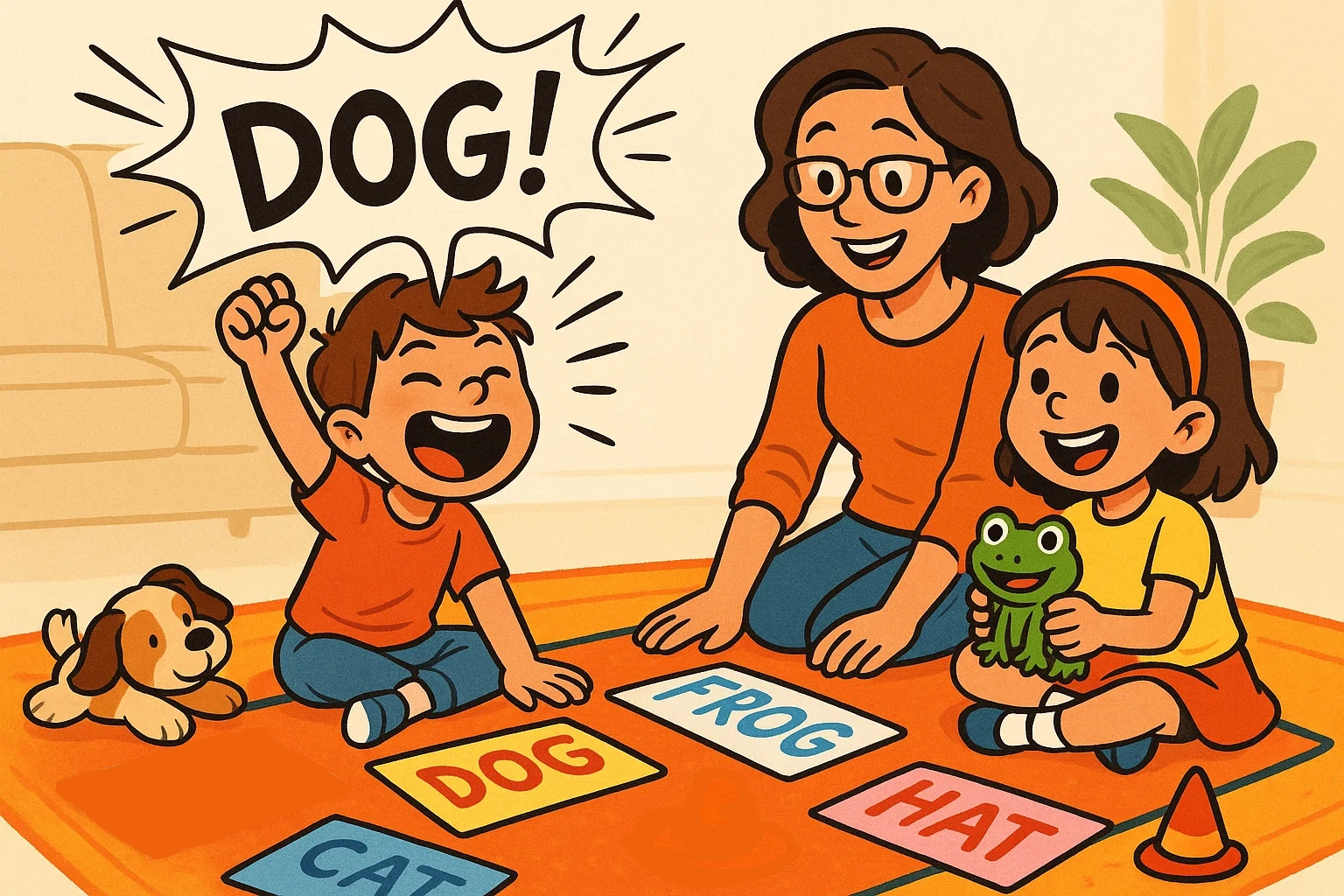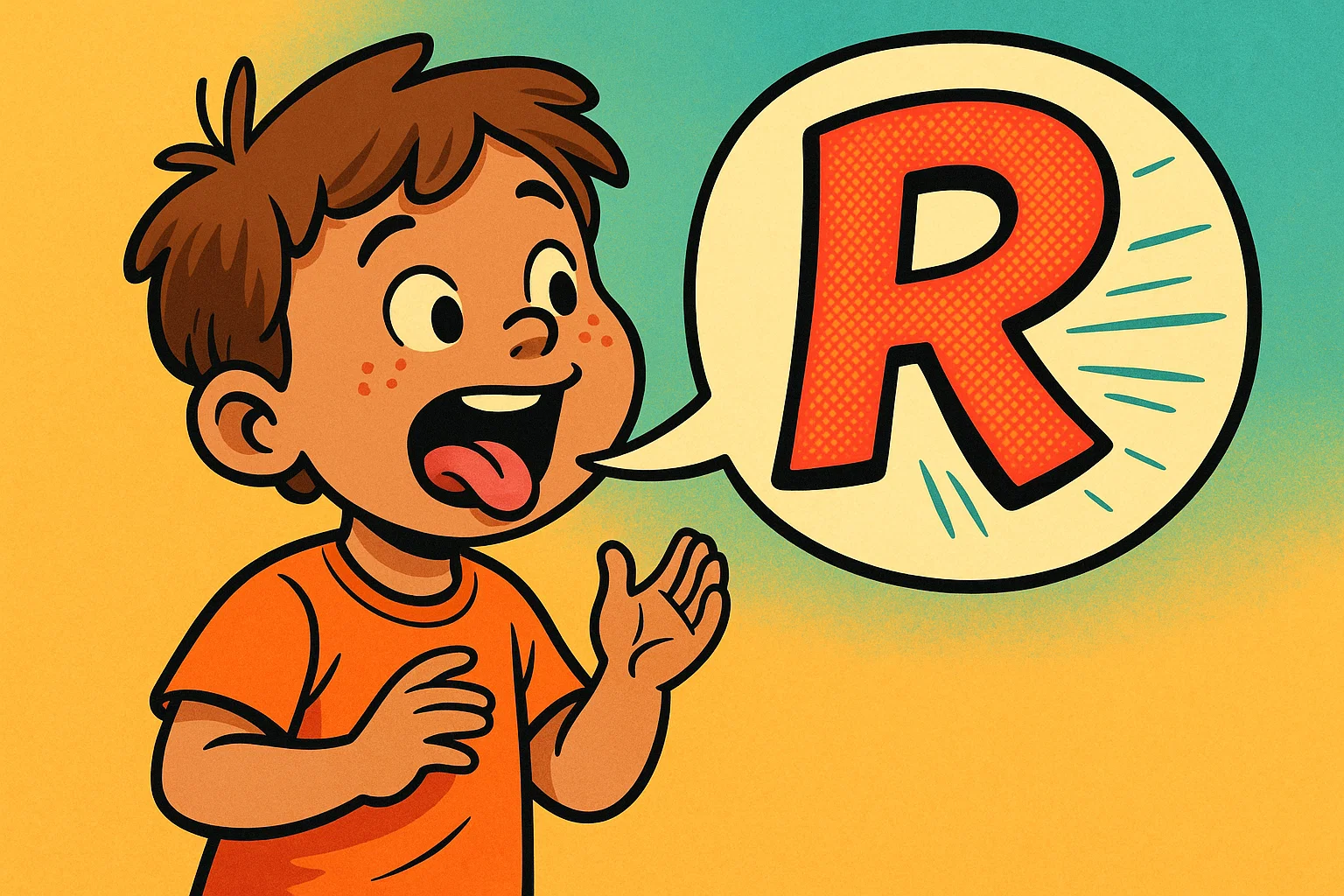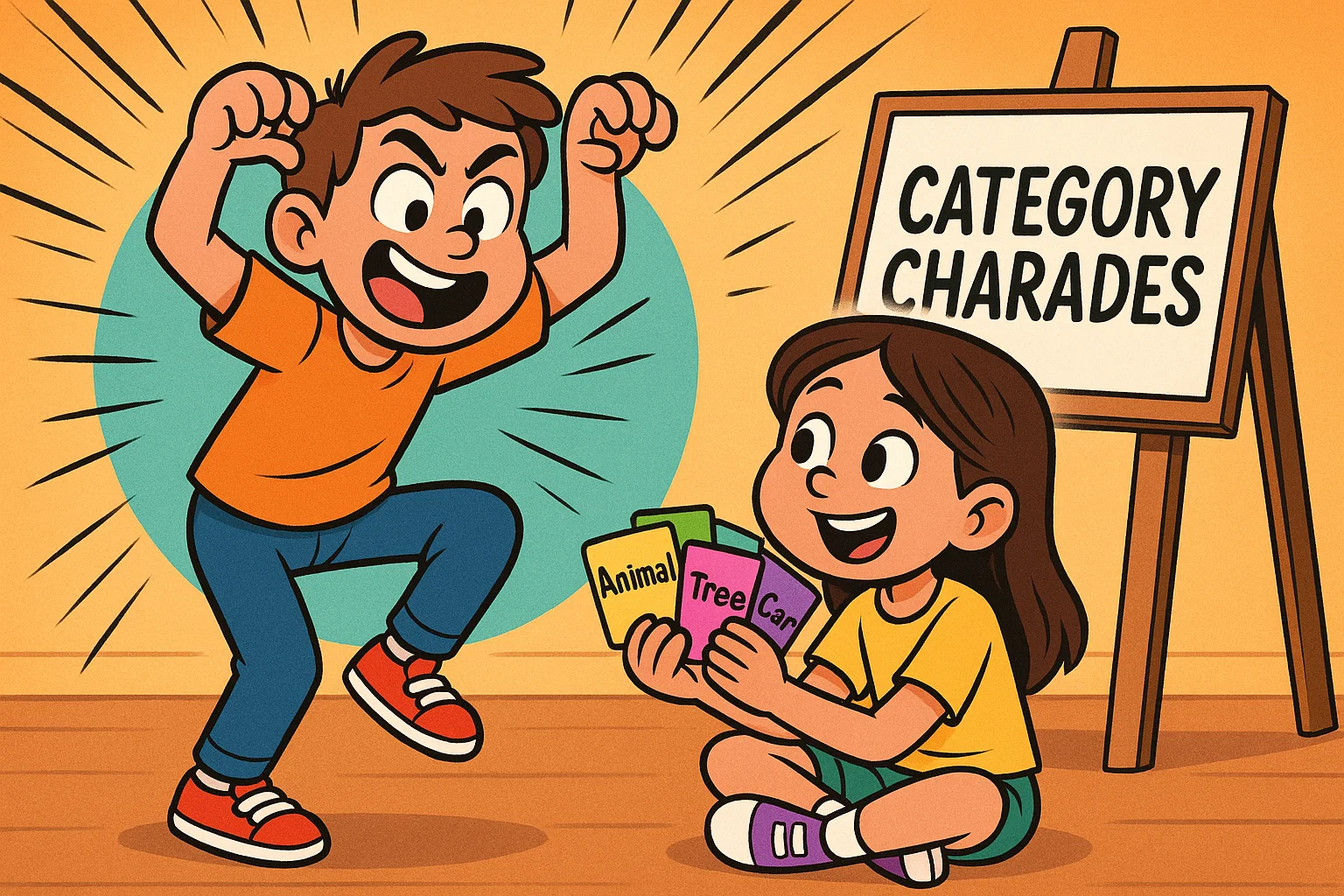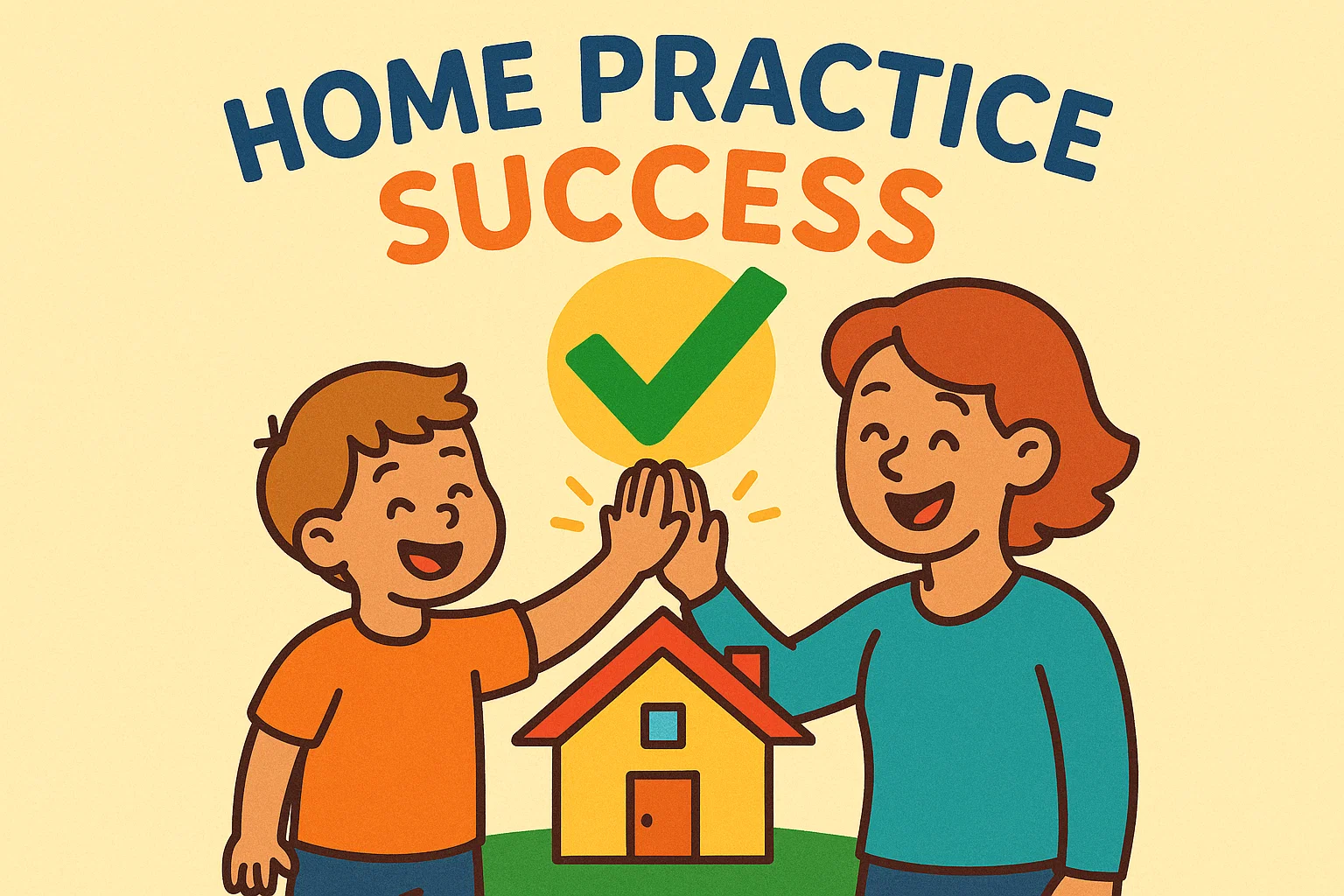Speech Therapy Games and Activities for Kids

When children struggle with communication, finding engaging ways to practice can transform their progress. Speech therapy doesn’t need to feel like work—games offer a natural way to practice language skills while keeping kids motivated and excited about learning.
Whether you’re working with a speech language pathologist or supporting practice at home, incorporating play-based activities helps children develop essential communication skills.
Games Articulation Practice

Articulation focuses on how children produce speech sounds. Many kids need targeted practice to master specific sounds, and game-based approaches make repetition enjoyable rather than tedious.
Simple one-minute drills
Short, focused practice sessions work wonders for young learners. Set a timer for sixty seconds and challenge your child to produce their target sound as many times as possible. You can use word lists provided by your speech language pathologist, or create your own based on sounds your child is working on.
For example, if your child is practicing the “S” sound, they might say: sun, sit, sock, silly, sand. Keep track of correct productions with tally marks or stickers—kids love seeing their progress visualized. According to research from the American Speech-Language-Hearing Association, frequent short practice sessions often yield better results than longer, less frequent ones.
I Spy variations sound focus
Transform the classic I Spy game into targeted speech practice. Instead of using colors, focus on initial sounds: “I spy something that starts with /b/.” This activity works anywhere—at home, in the car, or during walks.
You can also reverse roles, having your child give you clues. This variation helps with both articulation and vocabulary development. The game naturally encourages multiple repetitions of target sounds without feeling repetitive.
Blend and segment words activities
Phonological awareness—the ability to hear and manipulate sounds in words—supports both speech therapy and early literacy. Blending activities involve saying sounds separately (/c/ /a/ /t/) and having your child put them together (cat).
Segmenting works in reverse: you say a complete word, and your child breaks it into individual sounds. Start with simple two- or three-sound words like “up” or “dog,” then gradually increase complexity. These activities help children understand how sounds combine to make words.
Tongue twister challenges
Tongue twisters provide concentrated practice with specific sounds. Start slowly, focusing on accuracy rather than speed. Classic examples like “She sells seashells” target the /s/ sound, while “Red leather, yellow leather” works on /r/ and /l/ sounds.
Create mini-competitions where you take turns saying the tongue twister, gradually increasing speed. This turns drill practice into a fun challenge that kids actually enjoy. Your speech language pathologist can suggest tongue twisters that target your child’s specific needs.
Sound bingo and Tic-Tac-Toe
Traditional board games adapt beautifully for speech practice. Create bingo cards featuring pictures of words with your child’s target sound. Each time they produce the word correctly, they can mark that square.
Tic-Tac-Toe offers similar opportunities—before placing their X or O, the child must say three words with their target sound. These familiar game structures reduce anxiety and increase engagement, especially for children who feel self-conscious about their speech.
Hopscotch word fun
Physical movement enhances learning for many children. Draw a hopscotch grid and write words with target sounds in each square. As your child hops through the course, they say each word aloud. This combines gross motor activity with speech practice, which can be particularly effective for kids who learn best through movement.
Language Development Vocabulary Games

Building vocabulary goes beyond simply learning new words—it involves understanding meanings, using words in context, and retrieving words quickly during conversation. These therapy games target expressive and receptive language skills.
The Name Game and Name Ten
The Name Game challenges players to list items in a specific category within a time limit. For example: “Name ten animals” or “Name five things you find in a kitchen.” This activity strengthens word retrieval skills and category knowledge.
Adjust difficulty based on your child’s age and skill level. Younger children might name three items, while older kids can handle more complex categories like “things that are soft” or “words that rhyme with cat.” This game works perfectly during car rides or while waiting in line.
Category Charades
Traditional charades gets a vocabulary boost when you focus on specific categories. Write words on cards—animals, actions, foods—and have players act them out. This game helps children connect words with meanings and actions.
The guessing aspect also practices receptive language skills as children process clues and make logical connections. It’s an excellent way to practice vocabulary in a low-pressure, entertaining environment.
Opposites Attract
Understanding opposites builds language skills and flexible thinking. Play catch or roll a ball back and forth—when someone catches it, they must say the opposite of a given word. Hot/cold, big/small, fast/slow. As children master basic opposites, introduce more challenging pairs like empty/full or rough/smooth.
Journaling and narrative writing practice
Written language activities support speech development by helping children organize their thoughts. Keep a simple journal where your child draws pictures and dictates or writes sentences about their day.
For children working on narrative skills, create story sequences together. Start a story and take turns adding sentences. This builds sequencing abilities, vocabulary, and understanding of story structure—all crucial elements of language development.
Storytelling with story cubes
Story cubes (dice with pictures on each side) prompt creative storytelling. Roll the dice and create a story incorporating the images that appear. This activity develops narrative language skills, creativity, and the ability to form coherent sequences of events. Children practice using descriptive words and connecting ideas logically.
Role-playing scenarios
Pretend play offers rich opportunities for language practice. Set up scenarios like a restaurant, doctor’s office, or grocery store. Children practice social communication, asking and answering questions, and using context-appropriate vocabulary. These activities mirror real-world situations, making the practice directly applicable to daily life.
Board Games Enhance Speech
Classic board games naturally incorporate many skills targeted in speech therapy—turn-taking, following directions, and using language in social contexts. These games require minimal adaptation to become powerful therapy tools.
Classic games Snakes and Ladders and Candyland
Simple board games like Snakes and Ladders or Candyland provide structure for language practice. Before each turn, have your child practice target sounds or answer a question. For example: “Say three words with /k/ before you spin.”
These games also teach social skills like waiting for your turn, which many children working on communication find challenging. The predictable structure reduces anxiety while providing multiple practice opportunities throughout the game.
The Sneaky, Snacky Squirrel Game
This preschool favorite involves collecting acorns of different colors using squirrel-shaped tweezers. It naturally encourages children to use color names, counting, and following directions. Add language targets by having children describe their actions: “I’m taking one red acorn” or “The squirrel is hiding three acorns.”
Pop Up Pirate game ideas
This suspenseful game involves inserting swords into a barrel until the pirate pops up. Before each turn, players can practice target words or sounds. The element of surprise keeps children engaged, and the quick turns mean frequent practice opportunities without long waiting periods.
Don’t Spill the Beans for turn-taking
This game teaches careful hand movements and turn-taking—both important for children developing communication skills. Players take turns placing beans on a wobbly pot until someone makes it tip. Use each turn as an opportunity to practice target sounds or answer questions. The game’s unpredictability keeps kids engaged and excited.
Scattergories for word retrieval
For older children, Scattergories challenges quick thinking and word retrieval. Players must list words in various categories that start with a specific letter. This game builds vocabulary, category knowledge, and the ability to access words quickly—a skill many children find challenging. Adapt the difficulty by adjusting time limits or category complexity.
Games Listening Following Directions
Following directions involves multiple skills—listening, processing language, remembering instructions, and executing actions in sequence. These games make practicing these skills feel like play rather than work.
Simon Says variations
Simon Says remains one of the most effective games for practicing listening skills and following directions. Start with simple one-step directions: “Simon says touch your nose.” Gradually increase complexity with two- or three-step directions: “Simon says jump twice, then spin around.”
This game helps children develop attention, listening skills, and the ability to hold multiple instructions in memory. It also teaches careful listening—acting only when hearing “Simon says” requires focused attention to detail.
What Time Is It, Mr. Wolf?
This active game involves children asking “What time is it, Mr. Wolf?” and following the wolf’s instructions to take steps forward. When the wolf says “Dinner time!” everyone runs back to safety. The game naturally practices asking questions, listening to responses, and following multi-step directions while incorporating physical activity.
Barrier games communication practice
Barrier games involve two players with identical sets of materials separated by a barrier (like a folder). One person gives directions while the other follows them, trying to create matching arrangements.
For example, use building blocks, toys, or drawing materials. The speaker must give clear, specific directions: “Put the red block on top of the blue block.” The listener practices following multi-step directions and asking clarifying questions. When finished, remove the barrier to see if the arrangements match—this provides immediate feedback on communication effectiveness.
Hide and seek word focus
Transform hide and seek into a language activity by hiding cards with target words or pictures around the room. Give directions for finding them: “Look under the chair” or “Check behind the blue pillow.” This combines following directions with vocabulary practice and makes speech practice feel like an adventure rather than a chore.
Maximizing Speech Outcomes Play

Using games effectively requires more than just playing—it involves thoughtful planning, consistency, and creating a supportive environment where children feel comfortable practicing their skills.
Tips for success with home practice
Consistency matters more than perfection. Even five to ten minutes daily yields better results than longer, sporadic sessions. Choose times when your child is alert and engaged—not when they’re tired or hungry.
| Best Practices | Why It Works |
| Keep sessions short | Maintains engagement and prevents frustration |
| Celebrate small wins | Builds confidence and motivation |
| Follow child’s interests | Increases natural engagement and practice |
| Mix familiar and new activities | Balances comfort with challenge |
| Model correct production | Provides clear examples without pressure |
Keep practice materials easily accessible. A dedicated basket or box with therapy games and activities makes starting a session simple. Rotate activities to maintain novelty while keeping some favorites available for when your child needs confidence-building success.
Why games effective for therapy
Games create what researchers call “incidental learning opportunities”—children focus on the enjoyable activity rather than the therapeutic goal, reducing performance anxiety. This relaxed state often leads to better outcomes than traditional drill approaches.
Studies suggest that children need hundreds or even thousands of repetitions to master new speech sounds. Games make achieving this practice volume possible by keeping children motivated through multiple trials. The natural context of play also helps skills generalize to everyday conversation more easily than isolated drill work.
Parental involvement importance
Your participation signals to your child that their communication development matters. Playing together also gives you insight into your child’s progress and challenges, helping you provide better support.
However, balance is important. If practice sessions become stressful, take a step back. Some children respond better to practice with siblings or other family members. Your role is to create a positive, encouraging environment—not to become a taskmaster. When in doubt, consult your child’s speech language pathologist for guidance on your specific situation.
Creating engaging sessions
Variety prevents boredom. Even the most engaging game loses appeal with overuse. Keep a rotation of activities and let your child have some choice in what you play. When children feel some control over the process, they’re more likely to participate enthusiastically.
Notice what captures your child’s attention. If they love dinosaurs, incorporate dinosaur figures into articulation practice. If they’re fascinated by vehicles, create games around cars and trucks. Personalizing activities to your child’s interests dramatically increases engagement and, consequently, practice opportunities.
Use everyday items for practice
You don’t need expensive specialized materials. Household items work beautifully for many activities. Use cotton balls for blowing exercises, dried beans for counting activities, or magazines for finding pictures of target sounds.
Common items also help children see that speech practice can happen anywhere, not just during designated therapy time. Practice language during cooking (naming ingredients, following recipe directions), during shopping trips (finding items, requesting help), or during walks (describing what you see). This integration into daily life helps skills become automatic rather than something reserved for therapy sessions.
Key Takeaway:
Speech therapy games transform necessary practice into enjoyable activities. By incorporating play-based approaches, you create an environment where children willingly engage in the repetition needed to develop strong communication skills. Remember that progress happens gradually—celebrate small victories, maintain consistency, and trust that your efforts are building the foundation for your child’s lifelong communication success.
Working on speech and language skills with your child is working on something that will benefit them throughout their entire life. Every game you play, every sound you practice, every story you create together contributes to their growing ability to express themselves clearly and confidently.
